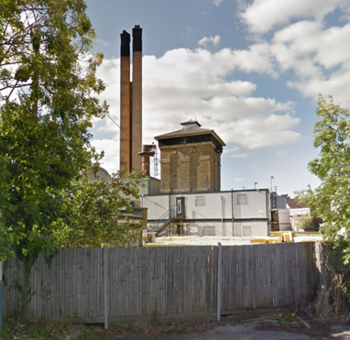Hillingdon Clinical Waste Incinerator
Clinical Waste Incinerator operated by Stericylce (SRCL) Ltd and based at Hillingdon Hospital.
| Hillingdon Clinical Waste Incinerator | |
 See HT & Clin → page for a larger UK Wide map. | |
| Waste Licence | LP3037UU |
| Operator | SRCL |
| Operational Capacity | 8,000tpa |
| Number of Lines | 1 |
| Region | London |
Annual Report Data
| Year | Total In | Total Clinical | IBA Out | ACP Out | Op Hours
|
|---|---|---|---|---|---|
| 2019 | 2669 | 2669 | 360 | 241 | 3167 |
| 2018 | |||||
| 2017 | |||||
| 2020 | 0 | 0 | 0 | 0 | 0 |
| 2021 | 0 | 0 | 0 | 0 | 0 |
| 2022 | 0 | 0 | 0 | 0 | 0 |

Summary
The Clinical Waste Incinerator is located at the Hillingdon Hospital and is operated by Stericycle (SRCL) Ltd. The plant consists of a single stream process, rated at 1,000 kg per hour[1] equivalent to 8,000 tonnes per annum of solid wastes. The Primary Chamber operates a conventional combustion pulse hearth design with sufficient retention time to burn the wastes to a high quality ash[1].
Plant[2]
Waste is loaded mechanically into the Primary Chamber using a hydraulic lift and tip arrangement, to avoid any manual handling of the waste[1]. The waste is chargeed into the incinerator where the combustion process commences. The clinical waste is burnt at a minimum temperature of 850°C for all categories of clinical waste except cytotoxic/cytostatic wastes which are burnt at a minimum of 1000°C, to produce an ash. The residues are then dropped into an ash quench pit at the end of the process before being transferred into a skip.
The flue gases from the incineration process then pass through a secondary chamber, or afterburner, where any gaseous products of combustion are burned out under oxygen rich conditions. This stage is designed to destroy any Carbon Monoxide, volatile organic compounds, and Dioxins and dioxin-like compounds and furans produced by the combustion process in the primary chamber.
The flue gases are then cooled by directing them through a waste-heat boiler and economiser, before they pass into the final, abatement section of the process.Powdered lime (Calcium Hydroxide) and powdered activated carbon are added to the flue gases entering the abatement process to remove acid gases, heavy metals and residual dioxins and furans before discharge to atmosphere from the stack. The flue gases being discharged from the stack are continuously monitored for Hydrogen Chloride, Sulphur Dioxide, Carbon Monoxide, Oxides of Nitrogen and Volatile Organic Compounds.
The incineration process produces two residues; bottom ash and spent lime.
The 2020 annual report states that the incinerator is currently off-line with the site being operated as a transfer facility agreed LEP and at the end of the same annual report it notes Plant off-line for major refurbishment. Scope of works controlled by the NHS[3]
Waste Tonnage, By Origin
The table shows a list of the Waste for the Permit LP3037UU, that has arrived into sites as reported to the Regulator and then publicised in their reported statistics. The Data used is from the most recent returns. The total reported tonnage arriving at the site was: Expression error: Unexpected < operator.t.
Where this tonnage exceeds that reported in year of the corresponding annual report, this may be due to the following reasons:
- Tonnage may have been received but not incinerated, i.e. the material is held pending incineration (the operator return to the EA reports as received whereas the annual report focuses on when the waste is incinerated.)
- Material may have been received into the site but treated in some other way than incineration.
- Material may have been received on the but transferred out of site for disposal/treatment at another site rather than incineration on the site.
| EWC Code | Origin of Waste | Tonnes In |
|---|
